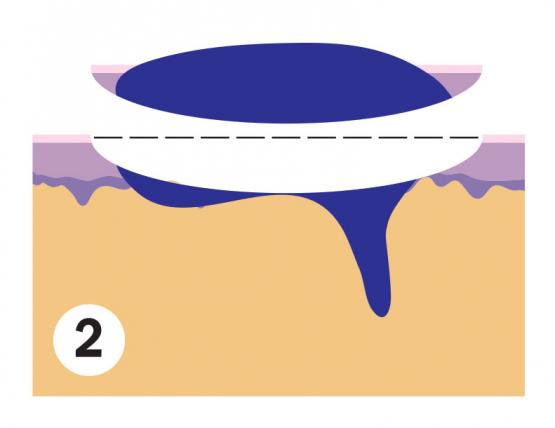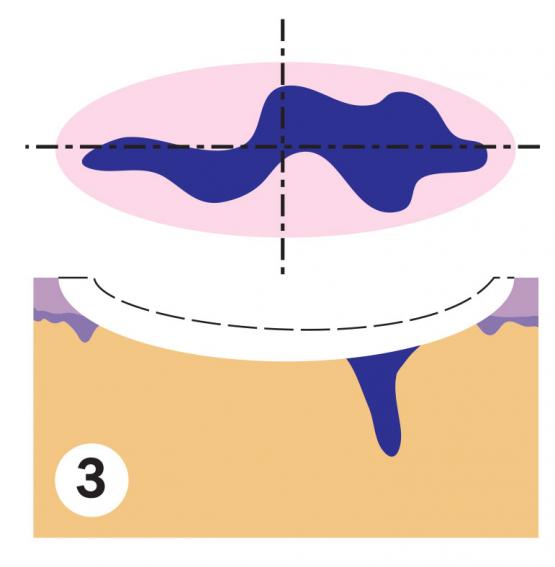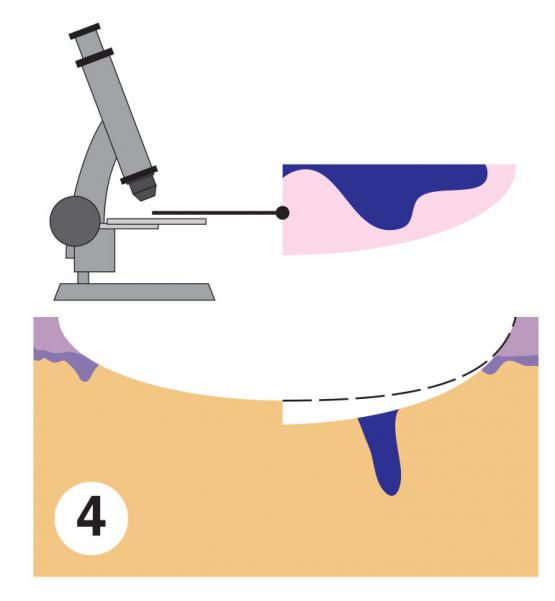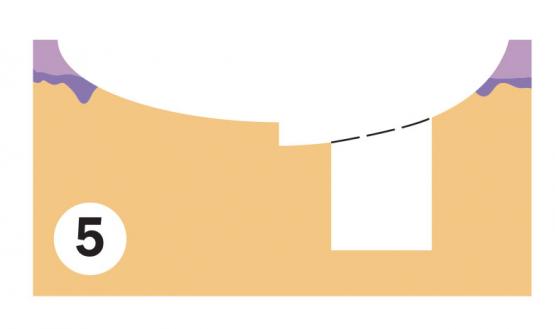- Treatments
- Medical Treatments
- Mohs Micrographic Surgery
Mohs Micrographic Surgery
Mohs micrographic surgery is a highly effective form of treatment for skin cancers and offers the best chance of cure whilst only taking the smallest amount of tissue necessary.
The treatment allows the tumour to be removed completely bit by bit in one visit to the hospital, minimising the amount of normal skin removed and thereby reducing scarring.
What is the benefit of Mohs Micrographic Surgery?
Mohs micrographic surgery has the highest cure rate of any skin cancer treatment.
The cure rate for Mohs micrographic surgery is high for both primary (new) basal cell cancers (up to 99%) and recurrent tumours (up to 95%) (BAD, 2013). It ensures this by removing the exact margins necessary for all the cancerous skin cells, rather than just an estimate. This drastically reduces the chances of recurrence, particularly when other treatments have either not been suitable or have been ineffective. Mohs surgery also allows the surgeon to confirm that the cancer has been removed entirely as the specimen is examined rigorously. Mohs micrographic surgery is carried out with the utmost precision, meaning that the surgeon will remove only the very minimum of healthy skin, thus keeping the wound (and scar) as small as possible.
What is the process of Mohs micrographic surgery?
The surgeon will first draw a line around the lesion to identify the site. Once the area is numb, the surgeon will then remove the tissue and send it to our laboratory; Each time a piece of tissue is removed it is checked for the presence of cancer. The procedure may need to be repeated two or three times to ensure that the cancer is completely removed. Patients may need multiple attempts to clear the tumour and so it can be quite a long day although most patients are clear within one or two attempts.
When the area of tissue is clear of cancer cells, the surgeon will discuss closing the wound. This may involve a small graft or skin flap. A dressing will then be applied.

Step One
The skin cancer extends beyond the visible margins of the lesion. If these roots are not removed, then the cancer will reoccur.

Step Two
The section of the lesion that is visible to the surgeon will be excised.

Step Three
This specimen of skin is then divided into multiple parts. The parts are then dyed for reference to highlight the source of the parts. A surgical site map is then made.

Step Four
The divided sections are then placed under a microscope to be examined for any remaining cancerous cells.

Step Five
If the microscope highlights any malignant cells, then the patient undergoes further surgery to remove a further layer of skin from the precise location where malignant cells remain.
Step Six
The process of examination and removal stops when the microscope shows no evidence of remaining malignancy in the surgical site. At this point, the surgeon can be confident the cancer has been removed, and the maximum amount of healthy tissue is kept intact.
Who is micrographic surgery suitable for?
Micrographic surgery is used on mainly basal cell carcinomas, but occasionally it is suitable for other skin cancers too, that are:
What are the risks of Mohs micrographic surgery?
As with all surgery, there is a small risk of complications, such as nerve damage or an allergic reaction to the anaesthetic or sutures. These risks will be explained by the dermatologist, who is the best trained and qualified person to avoid these events.
You may get a little bleeding from the wound and infection can occasionally happen. Nerves sometimes are involved with the tumour and so rarely you may get numbness around the scar or the muscles may not move in the same way. The wound will need to be repaired, usually with a small flap or graft, and so you will have a scar although every effort is made to place this sensitively. Finally, the tumour may recur in the same site but this is unusual.
Some lifestyle factors, such as smoking, can affect wound healing, and can even cause irregular scarring or more serious complications, so while it is best for your health not to smoke at all, it is essential that you heed the advice of your dermatologist in the weeks prior to, and after excision surgery.
Following the surgery, it is possible that you may experience complications such as bleeding, infection, swelling, or reopening of the incision. It is important to contact the clinic if you are experiencing any of these complications or unexpected pain or discomfort, whether they present immediately in the days following the operation, or weeks on from the excision.
In the rare event that you need care urgently and cannot contact the clinic, you should go to A&E. If necessary, dial 999.
What is the recovery time and outcome for Mohs micrographic surgery?
Usually, patients are ready to go home during the afternoon or sometimes earlier.
One of the main advantages of Mohs micrographic surgery is that you know your results immediately and you will not leave surgery until it can be confirmed that all the cancerous cells have been completely removed.
Depending on the individual, complete healing can take up to four weeks. Most people heal quite quickly if they are in generally good health and haven’t had any complications.
The follow-up care instructions provided by the clinic will let you know how long you’ll need to recover before you resume normal activities, or when you can resume taking certain over-the-counter medications. If there are any special considerations, your dermatologist will advise you, and if you have any questions during your recovery, you can email our team, who will endeavour to reply as quickly as possible.
Following the surgery, you may need to come into the clinic to have stitches removed and you may need a further appointment with a dermatologist.
Send an Enquiry